“Clear de Road,” the Emancipation 175 Exhibit at the Fort Frederik Museum, part three of a three-part series, concludes with artists whose “decolonial work recenters the narrative to ensure it speaks from inside the Virgin Islands and for the Virgin Islands.”
The exhibit opened on July 3 and can be seen through Nov. 10, 9 a.m. to 4 p.m. “Clear de Road” is presented by the Division of Libraries, Archives, and Museums and was in partnership with the 175th Emancipation Commemorative Committee, sponsored by First Bank, with support by the Office of the Governor.
Part One and Part Two reveal the diversity of the artists in honoring their ancestors. Part Three continues in the same vein and invites the community to explore each part, digest each part, and share each part in honor of those who came before and of those who are yet to come.
Typhanie Yanique is a novelist, essayist, and poet. She is an outspoken activist on behalf of the Caribbean. She appeared on Democracy Now! on NPR and published an op-ed in the New York Times on the U.S. response to hurricanes in the region. Winner of numerous literary prizes, Yanique was a finalist for the Lambda Awards and the Townsend Prize for her most recent novel, Monster in the Middle. She is from the Virgin Islands and is a professor at Emory University.
Stephanie Hanlon is a photographer, writer, and businesswoman. Hanlon’s photography has been shown in a number of exhibitions, including those curated by the High Museum’s photographer, curator Gregory Harris and the Atlanta Contemporary Museum of Art’s Executive Director Veronica Hogan. Her photography has appeared in many publications throughout New York and the Virgin Islands during her nearly 20 years as a journalist. Hanlon currently publishes her work on her blog, Literary Lens.
Portal — Printed Book and Postcards by Tiphanie Yanique and Stephanie Hanlon
Portal is a collaboration between writer Yanique and photographer Hanlon to make art a decolonial magic of connecting descendants to their homeland. Formally, Portal is a series of postcards. This ubiquitous symbol of touristic and colonial gaze is recalled and put instead into service for Virgin Islanders to communicate with other Virgin Islanders. The poems do myth-making work by presenting narrative writing from ancestors and to ancestors using the poetic forms of the found poem, the golden shovel and the map. The photos do the magic of abbreviating time and flattening space using techniques with slow and fast exposures. The duo said, “We approach this work as mothers.” Hanlon, a native New Yorker, birthed her child in the Virgin Islands. Yanique, a native Virgin Islander, birthed her children in New York. “We claim the V.I. for our children. Portal serves as a compressed voyage for our children to a Virgin Islands’ legacy.”
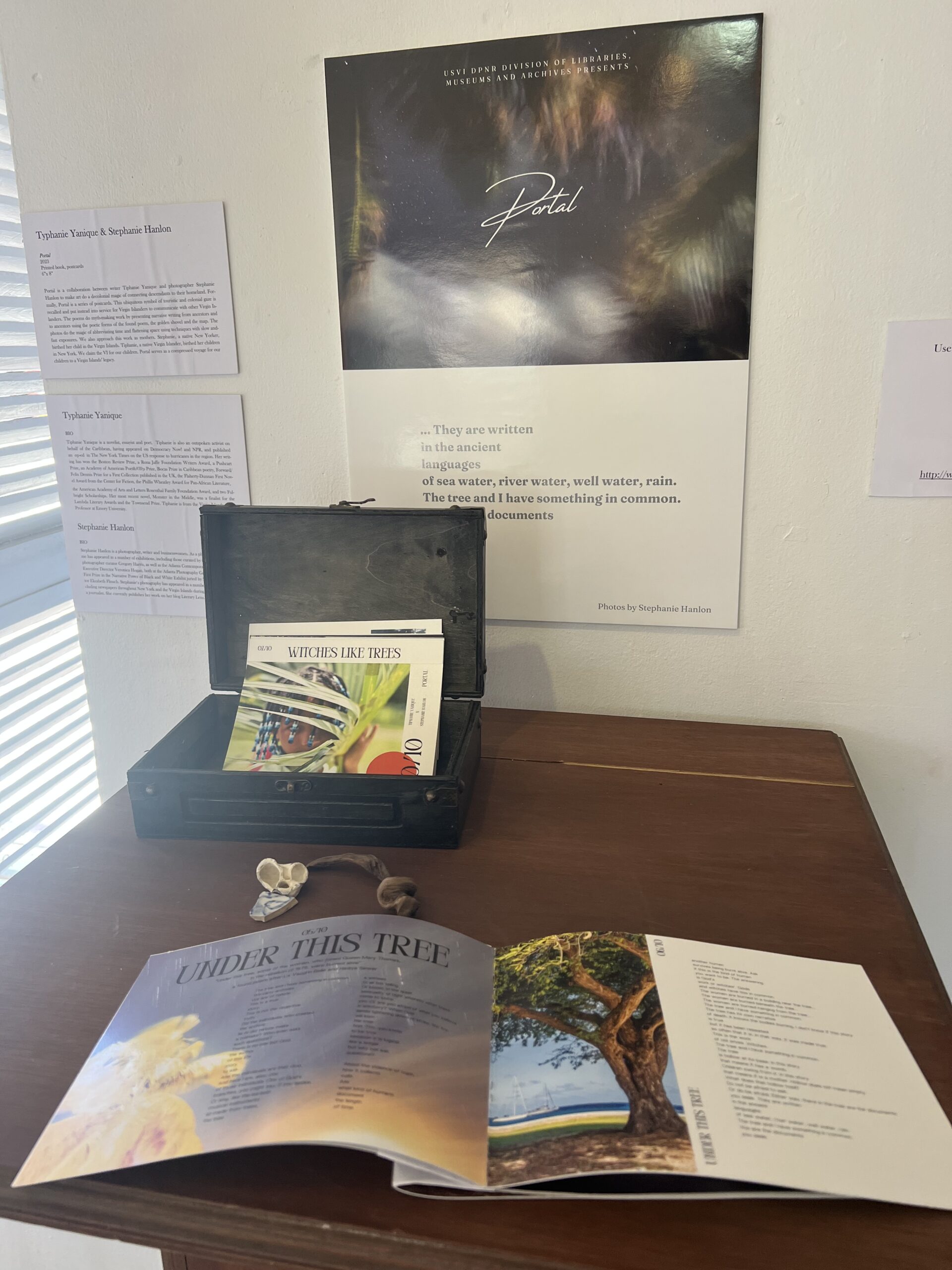
V.I. Youths as Keepers of the Flame Project by Mark “Feijao” Milligan II & Danica David
V.I. Youths as Keepers of a five-part mural is a collaborative project by world-renowned artist Milligan and artist/educator David, curator Monica Marin, and students of the St. Croix Educational Complex High School’s 21st Century Summer Program.
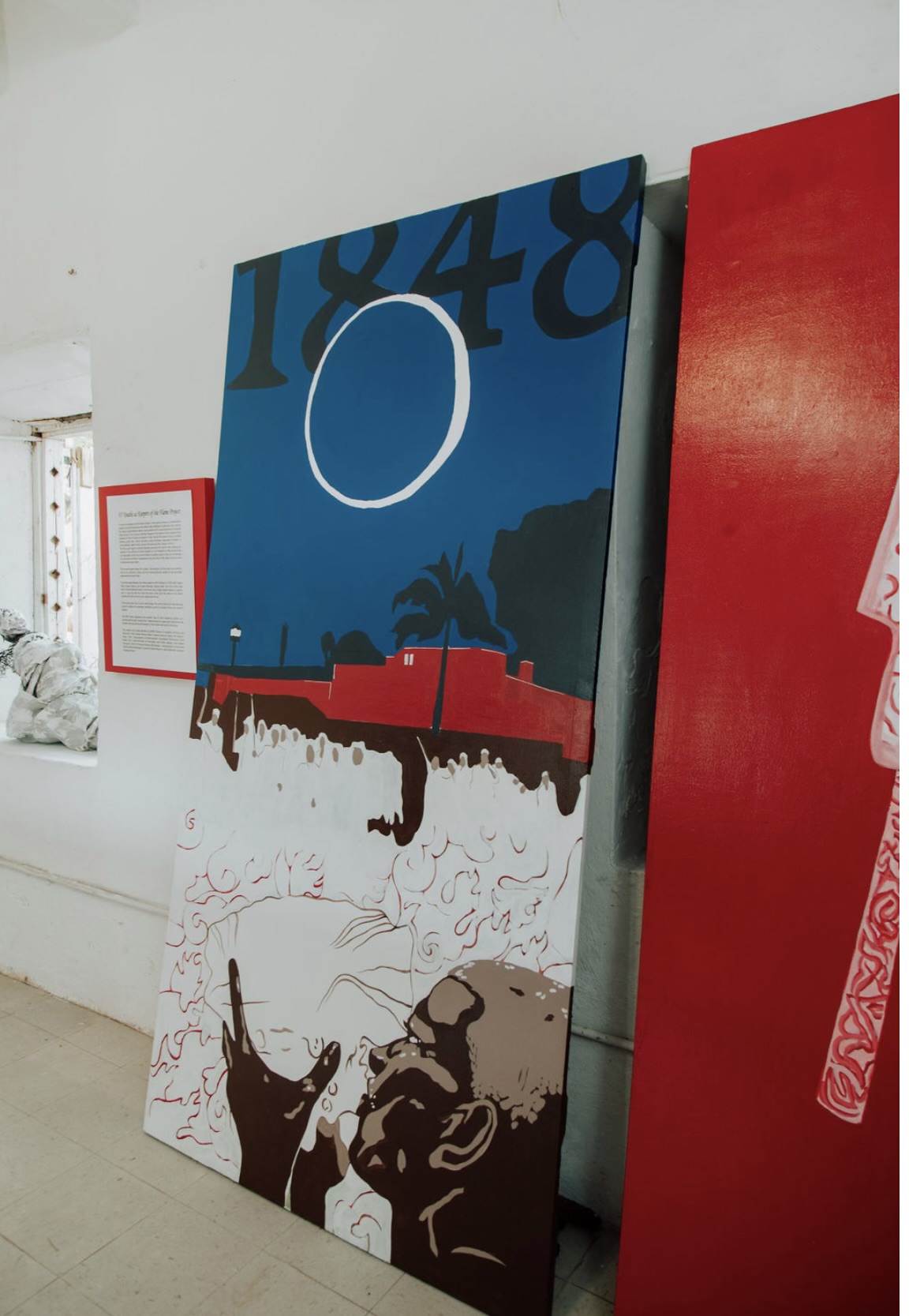
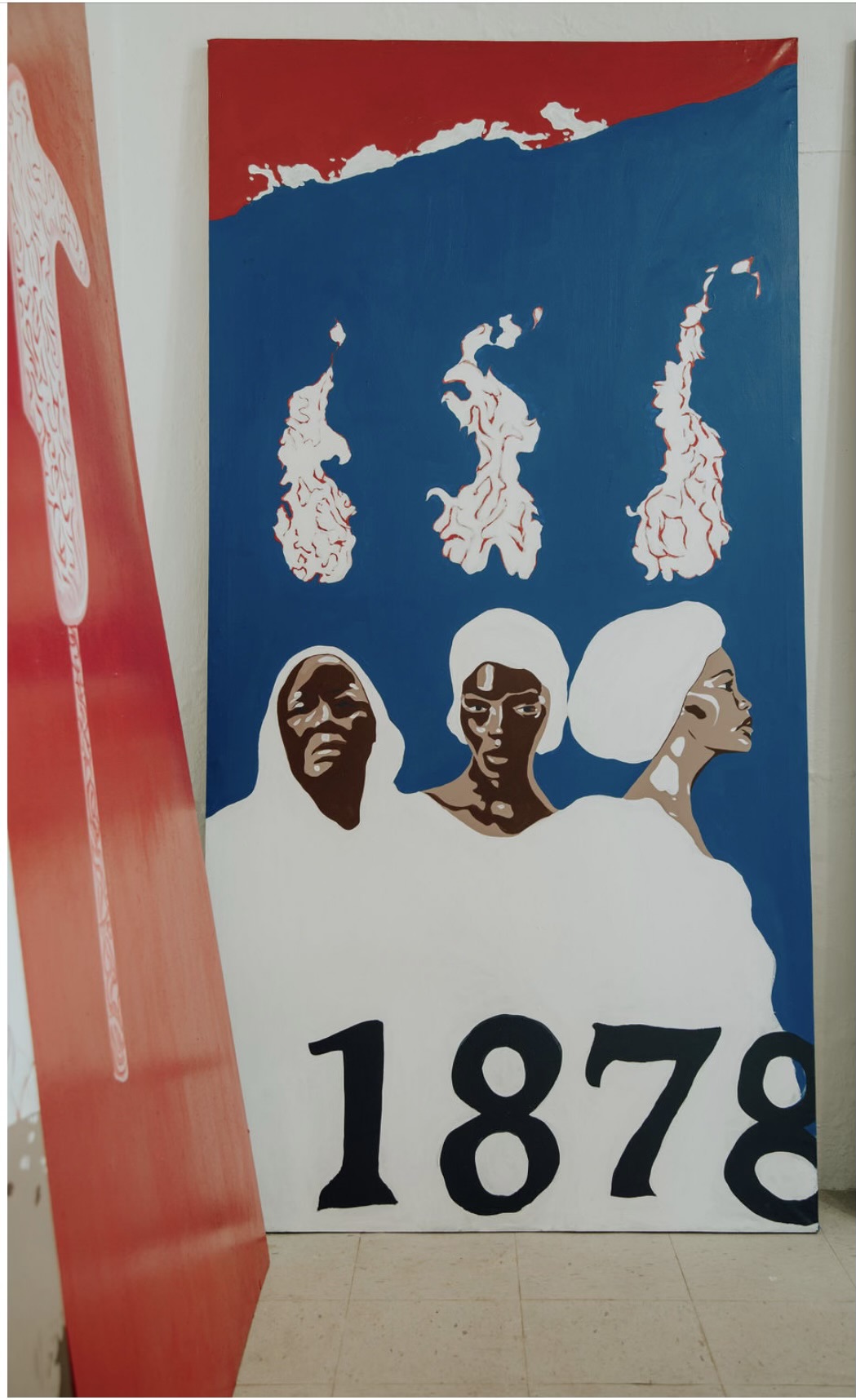
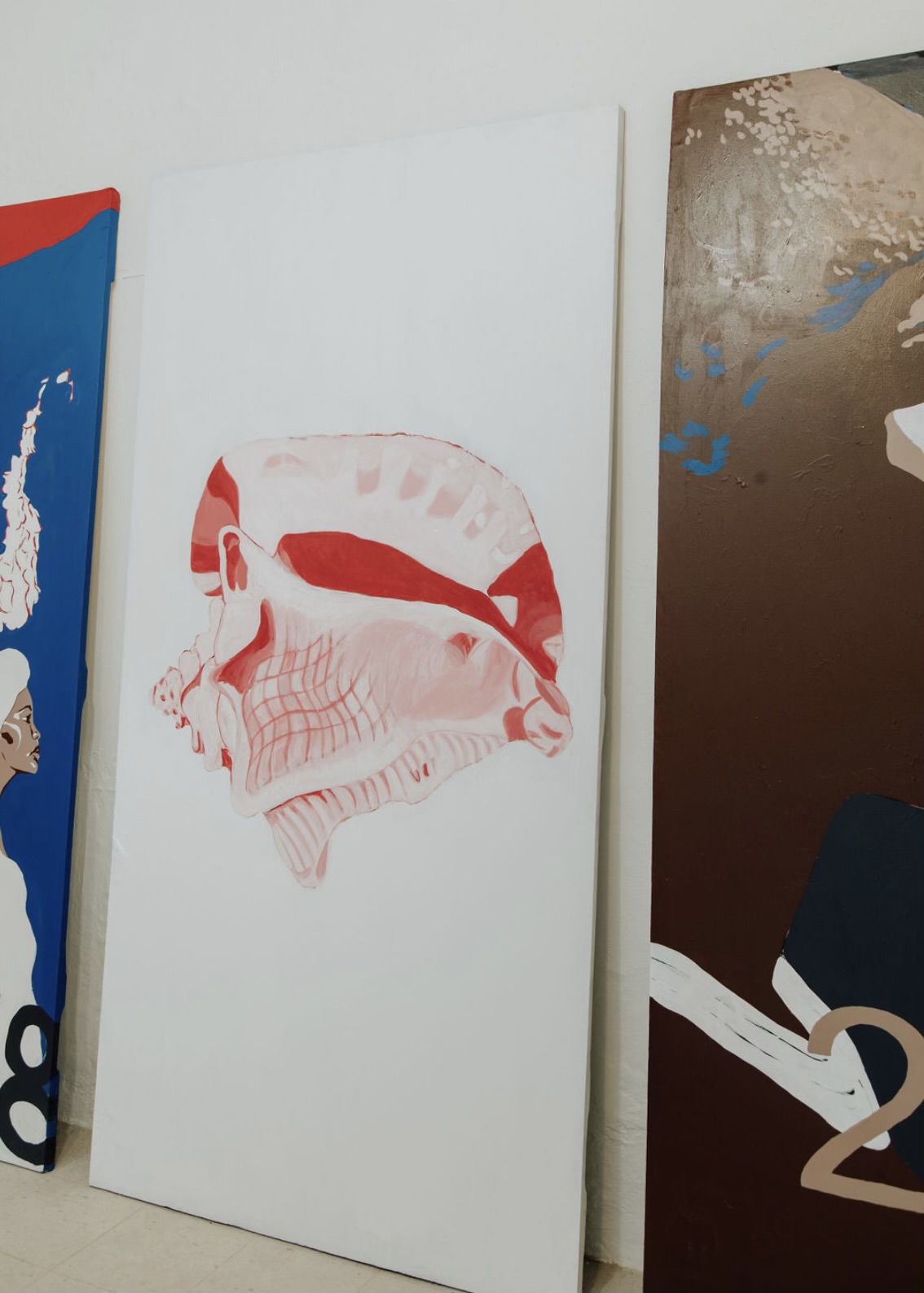
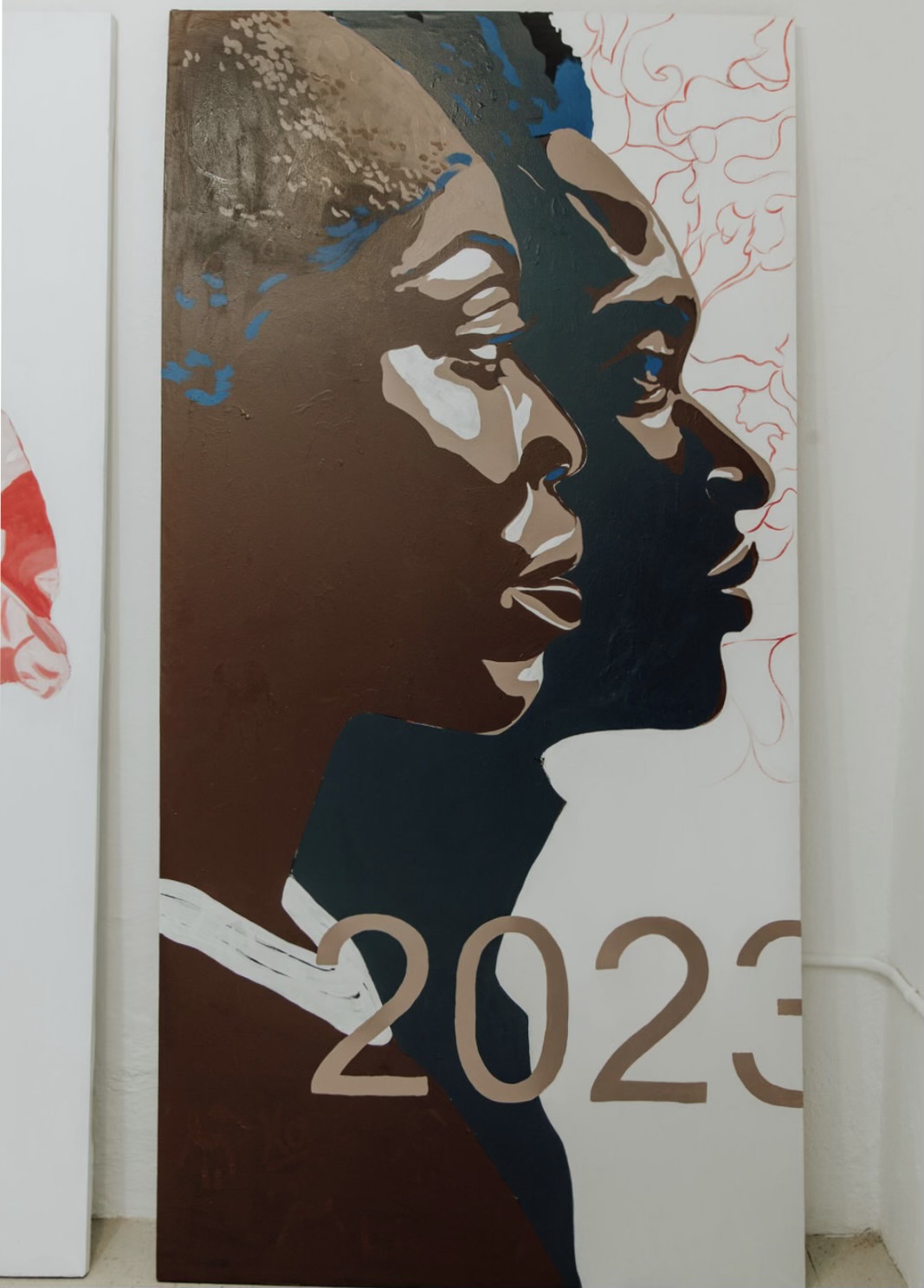
Gerville Larsen “To conceptualize the importance and relevance of Emancipation to native Virgin Islanders and the African Diaspora by invoking the hunger for freedom realized and achieved by our heroic ancestors. This hunger for freedom is encoded in our DNA as descendants of formerly enslaved Africans and Indigenous Peoples.”
Larsen’s two works address “facets of what we have endured and what connective bridges we have with our past that are linked to our present.”
Viatic Voyage was one of the U.S. Virgin Islands’ representatives in the III Biennial of Caribbean and Latin American Art held in Santo Domingo, Dominican Republic.
It is part one of two differently scaled figurist paintings that address the inconceivable horror of the transport of enslaved Africans during the Middle Passage.

Fervid & Forthright
Part of a diptych from the “fervid & forthright” collection. The piece is based on the principle of Sankofa, a word in the Twi language of the Akan people of Ghana, which translates to “it is not taboo to fetch what is at risk of being left behind (The power of Sankofa centers around this: to know history and your heritage is to know your current self, the world around you, and how to better both).
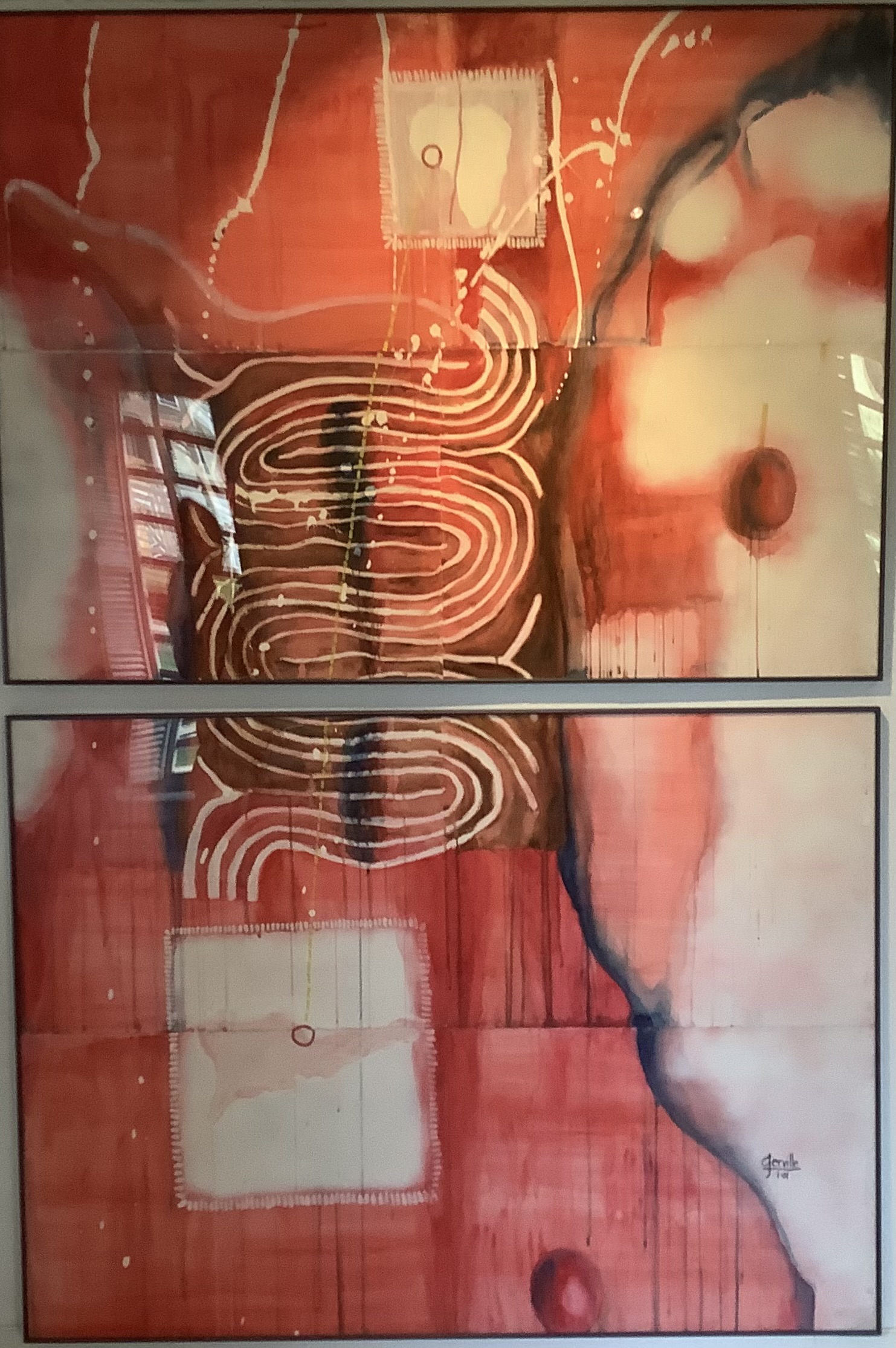
Ayana Omilade Flewellen (they/she) is a Black feminist, an archaeologist, a storyteller, and an artist scholar. Flewellen is the co-founder and current president of the Society of Black Archaeologists, sits on the Board of Diving With a Purpose, and is an assistant professor in the Department of Anthropology at Stanford University. As an artist, their work addresses Black Feminist Theory, historical archaeology, maritime heritage conservation, processes of identity formations, representations of slavery, and memory. Their art practice is rooted in the physicality of the ground and takes the form of metal and stone adornments and small installation pieces.
Flewellen was selected for the inaugural 2021-2023 cohort Called By Water and has been featured in National Geographic, Science Magazine, PBS, and CNN; and regularly presents their work at Stanford, Harvard, and the National Museum for Women in the Arts.
Flewellen shares the piece as part of an ongoing series, “Histories Held in the Atlantic: The Boat Above and the Boat Below,” which asks what formations of Black futurity are made possible when we wade into the depths of the Atlantic as a space of Black becoming.”Histories Held in the Atlantic is unfolding in my mind and through my hand as I read and reread “The Open Boat” by Edouard Glissant,” they said. “In the ‘Open Boat,’ Glissant theorized the ethnogenesis of Black Diasporic identity in the Americas through the wooden vessels carrying enslaved Africans across the Atlantic as spaces of death and rebirth.” Glissant writes, “The Slave Trade came through the cramped doorway of the slave ship, leaving a wake like that of crawling desert caravans.” While Glissant theorizes cultural formations on both sides of the Atlantic, Histories Held in the Atlantic holds the ocean as an intermediator in stasis, asking that knowledge is held by the ancestors in the depths of the ocean.
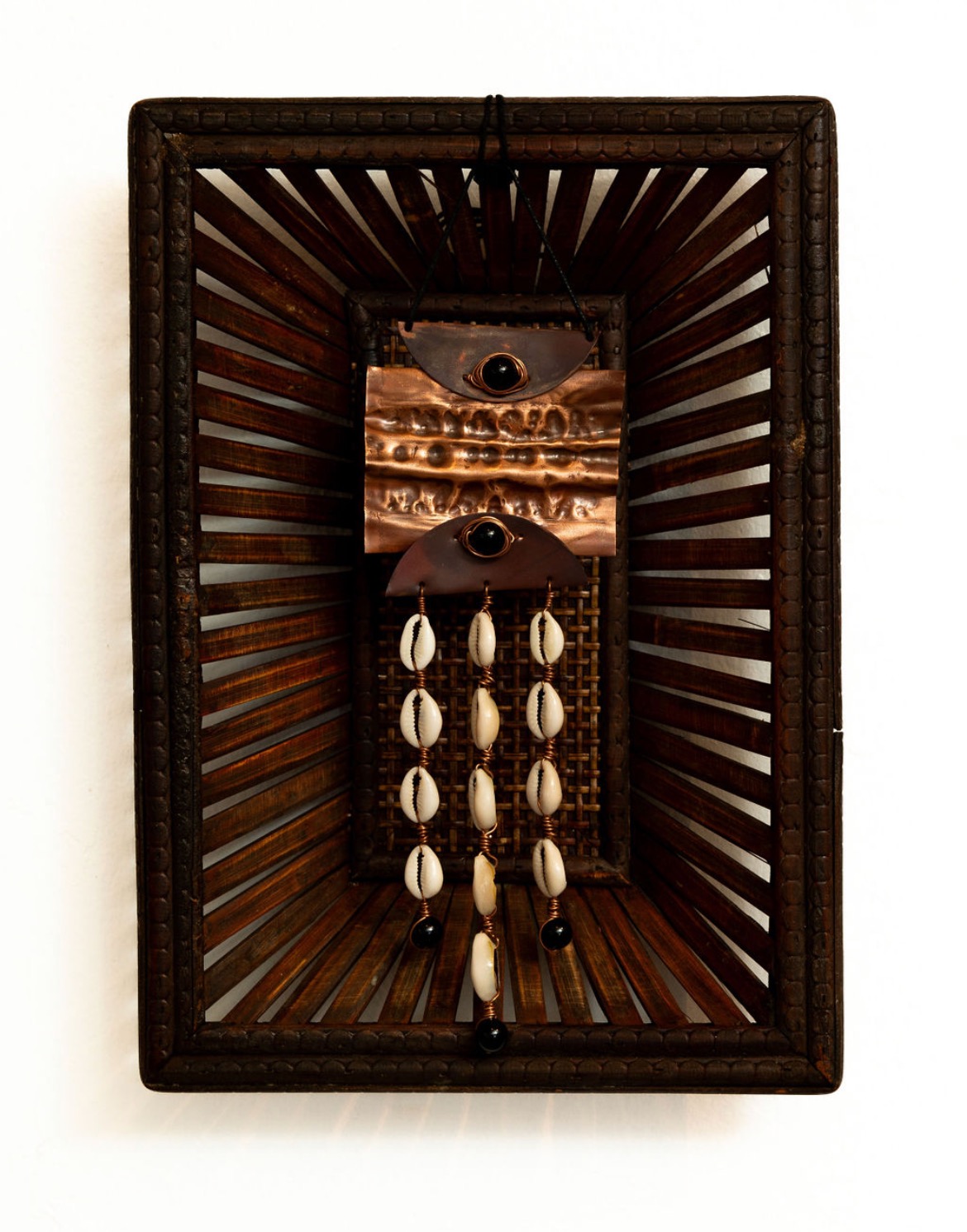
Elisa McKay is a self-taught artist who grew up in Harlem, New York. McKay migrated to St. Croix to teach high school English, raise her young daughter, and become a companion/caregiver to her aging parents in their native home. This “Island Paradise” was the inspiration for her handcrafted greeting cards, which later moved to increasingly larger formats interpreting themes of family, community, celebration, and culture. Silhouettes of African fabric and paper, combined with acrylic, gouache, watercolor and findings, create striking mixed-media designs. McKay exhibits regularly on St. Croix and has shown her work at galleries on the mainland. Her collages can be seen on local calendars. They have adorned the covers of several publications and have been used as advertising media. McKay’s most recent contribution to the arts is her Solo Retrospective: Celebrating 40 Years of Joy at the Caribbean Museum Center for the Arts in Frederiksted, St. Croix.
Ancestral Joy is McKay’s collage embellished on the canvas background of Ogese McKay’s rendition of the Christiansted Steeple, built in 1753 and was the place for religious worship until 1831. It was the first Lutheran Church, which was later changed to the Lord God of Sabaoth Lutheran Church. Officers and soldiers at Fort Christiansvaern, plus government officials and staff of the Danish West Indies, worshiped there. Africans were allowed to worship at the Steeple building before the Emancipation of 1848. “My parents were married in the Lord God of Sabaoth Lutheran Church on King St. in 1919. They were both eulogized there — my mother in 1985, my father in 1995. The art depicts Ancestral Joy full circle.”
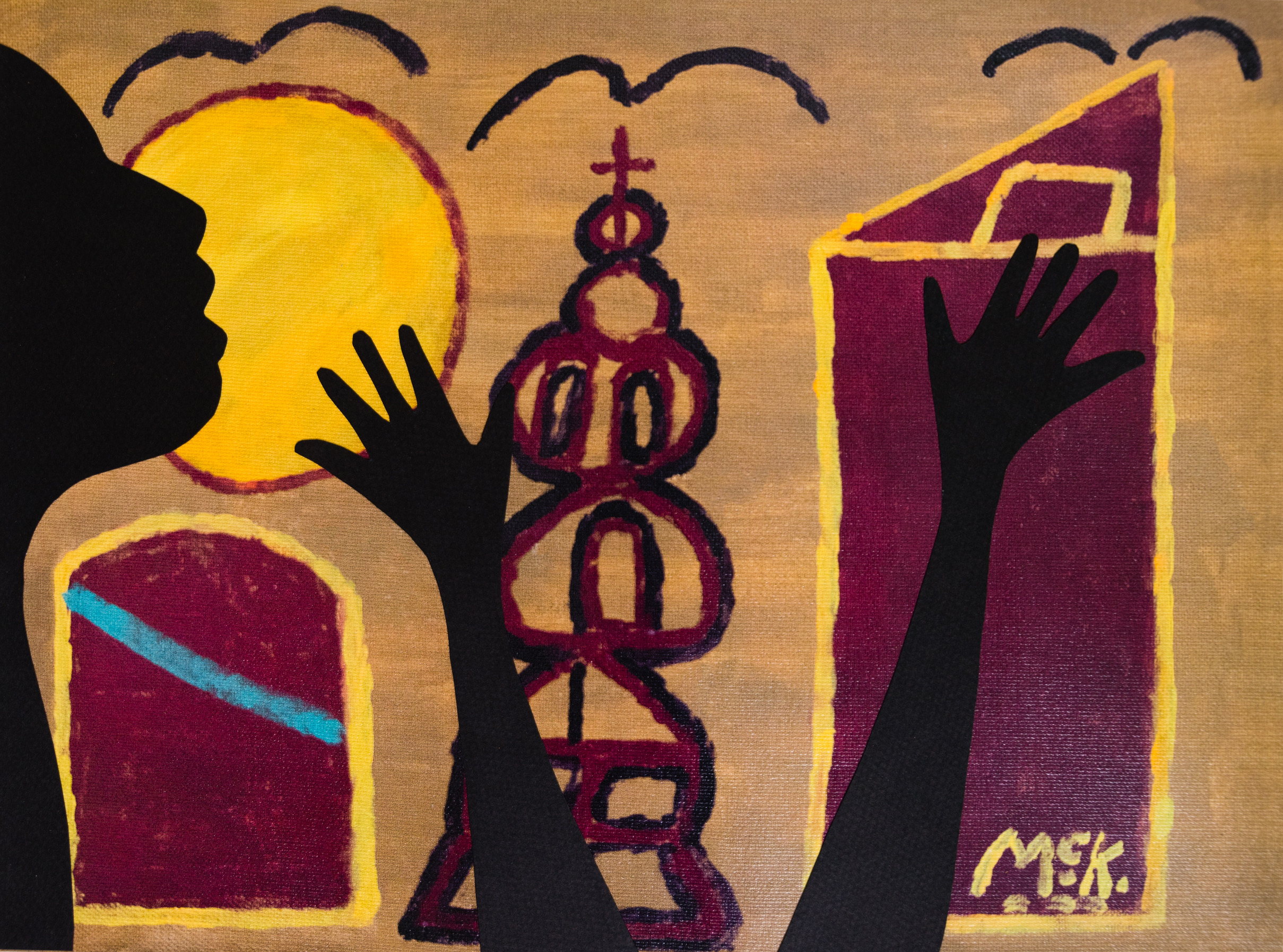
Paloma McGregor is a Crucian choreographer based in New York City. McGregor makes Black work with Black folks for Black space. A former newspaper reporter, she combines a choreographer’s craft, a journalist’s urgency, and an anti-racist organizer’s framework to activate creative communities and shepherd collaborative visioning. McGregor has been an inaugural recipient of several major awards for her art-making and organizing, including Mosaic Network & Fund, Dance/USA’s Fellowship to Artists, Urban Bush Woman’s Choreographic Center Institute Fellowship, and Surdna Foundation’s Artists Engaging in Social Change. In 2017, she won a “Bessie” Award for performance with skeleton architecture, a collection of Black women(+) improvisers. McGregor is currently a resident artist at BAAD! The Bronx Academy of Arts and Dance is a recipient of the two-year Artist Employment Program of Creatives Rebuild New York (2022-2024).
A ‘we deh ya (All of us are here): Sketch 321 – Salt/Cane/Womb
In a Crucian sugar cane field, three Black women converge, dancing through an inherited liberation code. The choreographic proposal is a political one: our bodies carry the technologies for reclaiming spaces and enacting our freedom. Our freedom depends on our ability to collaborate across Black diasporic experience; the collaborators have roots in Ghana, Peru, the Virgin Islands, and the Continental U.S.
“A ‘we deh ya” is:
Conceived and directed by Paloma McGregor
Co-created by Rosa Lisbeth Navarrete
Filmed by McGregor, MK Abadoo and Monica Marin
Choreographed and performed by Paloma McGregor, MK Abadoo and Savannah Lyons Anthony, with Olamina McGregor, Young-Spivey and Ella Abadoo
Poems by Jacob V. White
Voice by Rosa Lisbeth Navarrete
Produced by Angela’s Pulse
Filmed in Ay Ay (colonially known as St. Croix, US Virgin Islands)
Special Thanks to:
Open Society Foundation’s Soros Arts Fellowship
The National Center for Choreography (NCCAkron)
And curator Cara Hagan, for your invitation, vision and faith
V.I. Youths as Keepers of the Flame Project are the following SCECHS students who assisted in the five-panel mural:
Malik Stevens, Jayla John, A’Nyra Richards, Alexander Polydore Jr., Zuma Nisbett, Jayda Patrick, and educator Eloise A. Henry.
The V.I. Youths as Keepers of the Flame Project was made possible by DPNR’s Division of Libraries, Archives, and Museum’s Chief Curator Monica Marin, Director Amy DeSorbo, The Virgin Islands 175th Emancipation Commemoration Committee Chairwoman Carol Burke, ECC’s Subcommittee on Education and Public Display Chair Akeem McIntosh, SCECHS Principal Rodney Moorehead, Education Commissioner Dionne Wells-Hedrington, Gov. Albert Bryan Jr., and Lt. Gov. Tregenza Roach.
Clear de Road was curated by Monica Marin and co-produced by Akeem McIntosh, chair of the 175th EEC’s Subcommittee on Education and Public Display, with exhibition installation and assistance from Niarus Walker and Ralph Motta.
For more information:
Call Fort Frederik Museum at 340-772-2021





